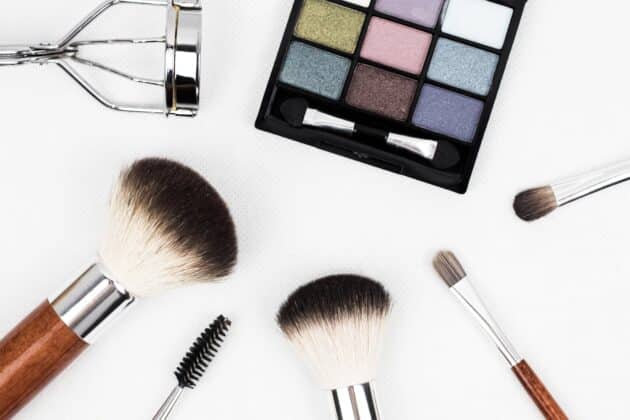Ever hankered for a super refreshing drink that’s low in calories and has no artificial sweeteners?
Meet Bai Brands, and thank John Denny for being able to get it everywhere awesome beverages are sold.
Denny was the VP Media & eCommerce at Bai from 2013 to 2017, where he worked on one of the fastest growing beverage brands in the US. Bai was named to the Forbes 2015 list of America’s Most Promising Companies, ranking 13th among the top 100.
Over the course of four years, John grew the brand on Amazon from a small niche product to the number one beverage brand sold on the platform. Bai was acquired by Dr Pepper Snapple Group in one of the largest CPG acquisitions of 2017, at $1.7 billion dollars.
Today, Denny is the VP of eCommerce & Digital Marketing at CAVU Venture Partners, a consumer-focused investment firm. There, he partners with portfolio companies to build high growth brands that disrupt the CPG marketplace.
We recently spoke with him at the Criteo Commerce Marketing Forum in NYC about all things CPG, including what startups are doing to disrupt the space, the new ways consumers are discovering products, and how much influence Gen Z really has on the market.
The Power of Peer Reviews and a Digital-First Mindset
Q: What was your initial marketing challenge with Bai, and how did you overcome it?
Obviously, we were the challenger brand. When you’re a challenger brand, you have to figure out how you’re going to break out.
And it was interesting — one of the first things that we noticed when we looked at inbound customer searches was people were asking questions about the brand. They were asking questions like: What’s in Bai, what are Bai’s ingredients, what’s the sweetener in Bai, what’s erythritol, does Bai have side effects?
And it was sort of a logical thing. When people are buying a product today, especially in the healthier-for-you product category, the first thing they look at is: What are the ingredients, and how do those affect my body? So in looking at that, it was very clear that consumers were searching for information.
A lot of data was coming out at that time in 2012, 2013 about the impact of Amazon reviews. And that’s really the place that consumers are vetting products. They’re debating and discussing them, talking about ingredients, and really outing a product if it doesn’t make the cut. And if you are a really high quality product, the Amazon community will tell you that.
And we could see early on — we had a 4.4 rating on Amazon and performed really well in terms of consumer feedback. It showed us that digital channels could be a real way forward for us.
Q: What do you think other startups are doing to disrupt CPG?
You look at brands like RXBar, Soylent, a lot of these brands are leaning in heavily to digital channels and attacking them in ways that may cause larger companies to hesitate
In large companies, ecommerce can often be a rounding error. So getting their ecomm teams rallied to spend money on those ecomm channels can be a struggle. Those [startups] are really doing a great job of breaking out, establishing and building on great reviews to really grow the brand.
Q: What can legacy brands learn from startups — what are they doing right?
They’re thinking digital first. They’re thinking search first. They’re thinking about programmatic, sponsored search. They’re really understanding how search engines work, and that’s really allowing them to break out. Again you see some of the legacy brands not really understanding that world, and the startups are really going after it.
Q: Is there a big difference between how people are discovering new products today versus a few years ago?
Absolutely. I think about my kids, and the way they work. I’ll say: OK, there was a time 10 years ago when we didn’t have smartphones. And my kids will look at me and feel sorry for me, as if I’m a caveman. “Dad, how did you survive without all this data?”
The reality is what they see on their phones and having access to information 24/7 is the way they live. Instantly when they see a product, the first thing they do is search. They want to know about it. They’re checking search engines. They’re checking friends. They’re looking on Instagram. And it’s really what they see on their phones that’s telling them what to buy. So that’s a factor that didn’t exist five to ten years ago.
Giving Gen Z What They Want: Personalization
Q: A big topic on marketers’ minds is data. How can brands use data responsibly to better connect with consumers?
It’s the $40 billion question that Mark Zuckerberg and Facebook are struggling with right now. Obviously you have a consumer today that’s expecting personalization. When you look at my kids, Gen Z — age 10, 13, 15.
[Gen Z shoppers] go on a website, they have an experience. They expect it to be customized. They expect it to be personalized. If it’s not, they’re going to go to someplace else. So you really have a consumer mindset that expects data to be used.
If they’re retargeted with an ad for something that they’ve already purchased, they’re frustrated because they say: The data should know I already purchased this. So it’s a real struggle. I think there’s going to be some regulation in the marketplace. I think ultimately brands and retailers have to use more data. They have to do more personalization if they’re going to move forward and compete.
Q: How influential do you think Gen Z is on commerce, and specifically CPG?
I live in a house full of Gen Z, and their decisions are the ones that rule. They’re undergoing huge changes in the way they interact with the world. We’ve had [the virtual assistant] Alexa in our house for two years. She does my 10-year old’s homework (much to our chagrin). She reads audible books to her at bedtime. She gives the weather forecast. She wakes her up in the morning.

Gen Z is interacting with technology in a completely different way, and they influence things and influence what you buy to a degree that is kind of amazing.
Q: For brand marketers, are there things they can do to win over more of Gen Z?
Tactically you have to understand this is a world of search. Gen Z and consumers today, they have one of the most powerful computers in their hand 24/7.
There was a great article in Ad Age last August that talked about Millennials, and talked about the “Millennial problem” — how they don’t attach themselves to brands like previous generations. There’s a great quote where a Millennials said: “I don’t know why I would ever buy a product without spending 10 seconds opening a browser and finding out if that product was good enough”.
That’s the generation that we’re dealing with today. As a marketer you have to understand search, you have to understand ratings and reviews, you have to understand sponsored listings and how to build a brand through sponsored and paid search, you also have to understand programmatic and how that all works.
The Proof’s in the (CPG) Pudding
Between being mindful of peer reviews, leading with a digital-first mindset, and using data to provide more personalized experiences, it’s clear Bai Brands is a leader in disrupting the CPG space. For more on what happened at the Criteo Commerce Marketing Forum in NYC, check out this post and this post.






















